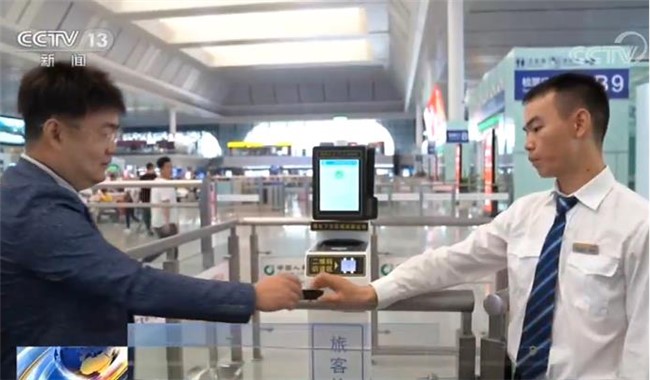Cctv newsSince the beginning of this year, China National Railway Group Co., Ltd. has gradually piloted and promoted e-tickets throughout the country. During Spring Festival travel rush this year, most high-speed rail lines in China will implement e-tickets.
On November 26th, the third batch of 24 stations of the Yangtze River Delta Railway launched e-tickets. At this point, the Yangtze River Delta high-speed rail lines and EMU stops have all entered the era of e-tickets.
At present, railway departments in Beijing, Shanghai, Sichuan, Shandong, Guangdong, Guangxi and other places have added hundreds of e-ticket pilot stations. From July 29th, all EMU trains with the prefix "C, D and G" in 13 stations of Chengdu-Chongqing high-speed railway can use e-tickets. There are 32 stations in Hanshi High-speed Railway, Wuxiao Intercity Line, Yichang East to Macheng North of Shanghai-Hanrong Railway, and Qingrong Intercity Railway, Qingyan Railway and Lunan High-speed Railway have also fully implemented e-tickets in Jinan Bureau. Passengers don’t have to pick up paper tickets in advance when they enter the station. They just need to brush their ID cards or mobile phone QR codes to check the tickets and take the bus.
During the period of Spring Festival travel rush in 2020, the railway department will expand the application scope of e-tickets for existing high-speed rail trunk lines and intercity railways, and implement e-tickets simultaneously with the opening of new high-speed rail lines, saving passengers time in ticket collection, ticket inspection and ticket checking. Among them, Shanghai-Kunming, Hefei, Chang Gan and other high-speed rail lines have piloted e-ticket business. Jiaoji Passenger Dedicated Line, Jiqing High-speed Railway and Shijike Passenger Dedicated Line will fully implement e-tickets before Spring Festival travel rush. The Rizhao-Linyi-Qufu section of Lunan (Rilan) high-speed railway will start e-ticket business at the same time when the new line is opened.

Speed up the efficiency of entering the station and solve the problems of ticket loss.
After the implementation of e-ticket, it not only improved the efficiency of passengers getting on the train at the station, but also curbed the troubles of loss reporting and replacement of paper tickets and fake train tickets.
As the future development trend of ticketing field, e-ticket is an important way to improve the level of railway intelligence. The implementation of e-ticket has opened up the service channels between the Internet and the station window, which is conducive to the implementation of non-interference services such as passenger self-service real-name verification and self-service ticket testing.
Because the e-ticket is bound with the passenger’s identity information, mobile phone number and other information, it becomes simple and fast to check the ticket. When the train staff checks the ticket, the passenger can complete the ticket check by showing the original valid identity document used when purchasing the ticket.
关于作者